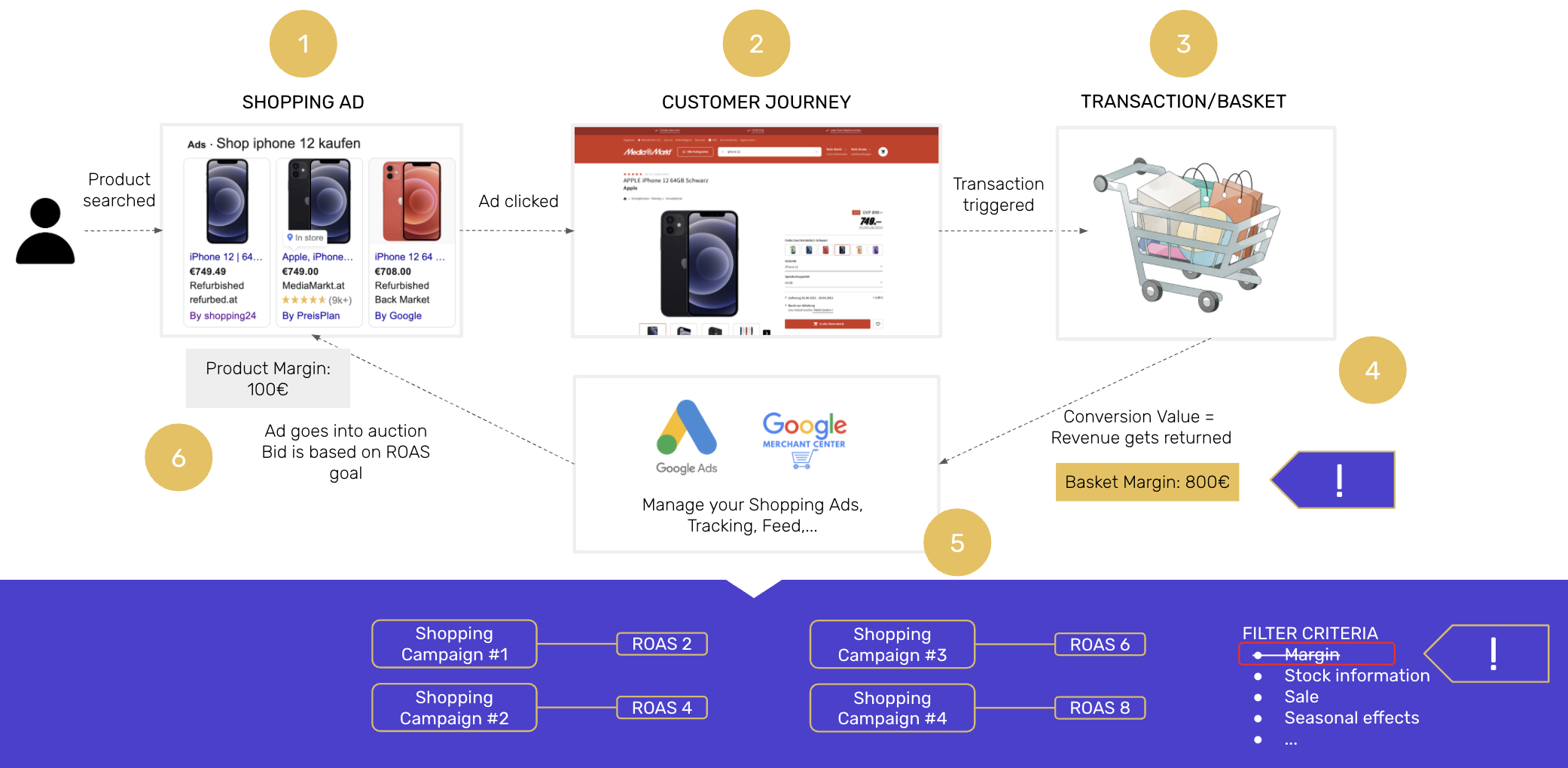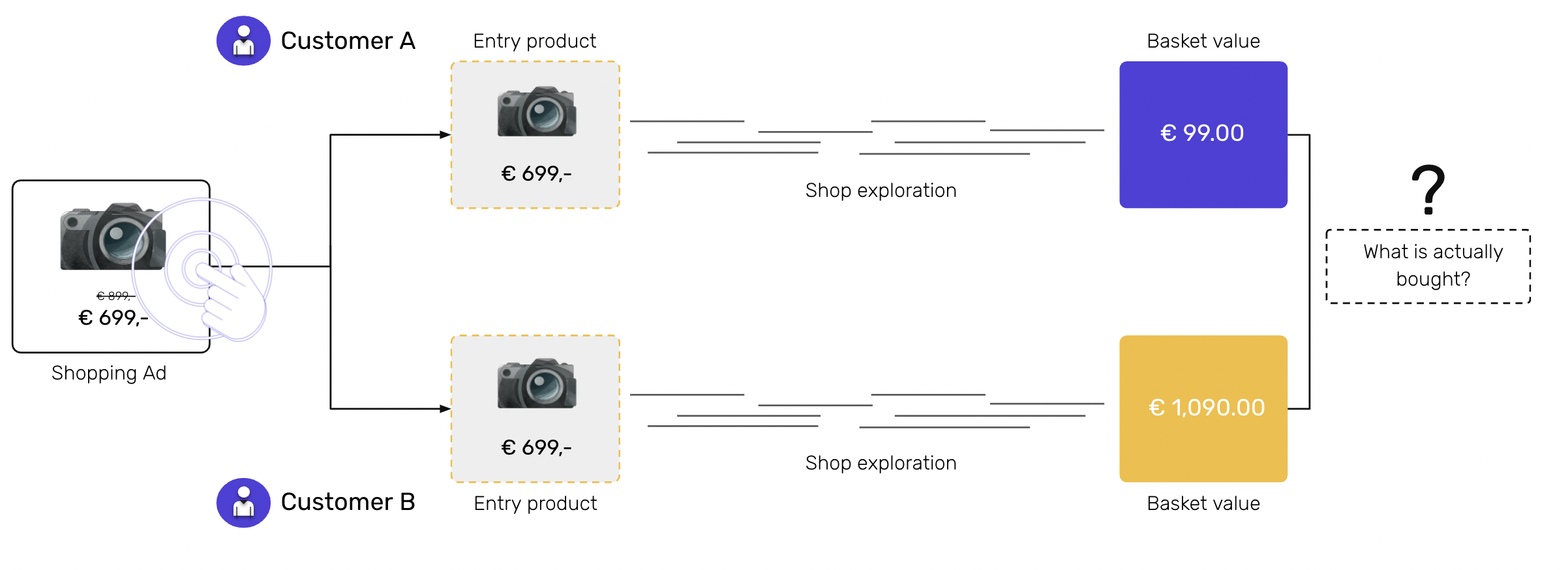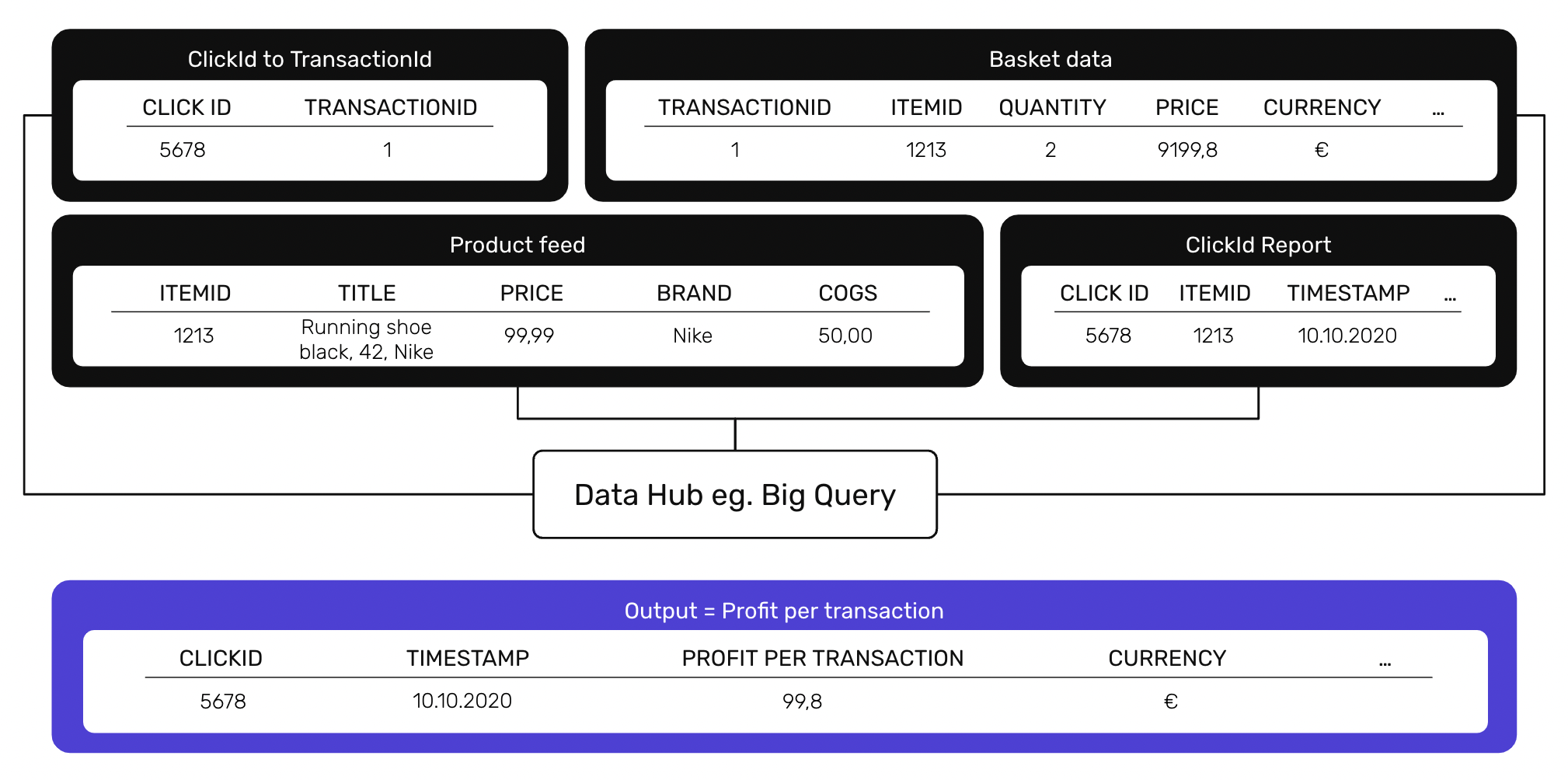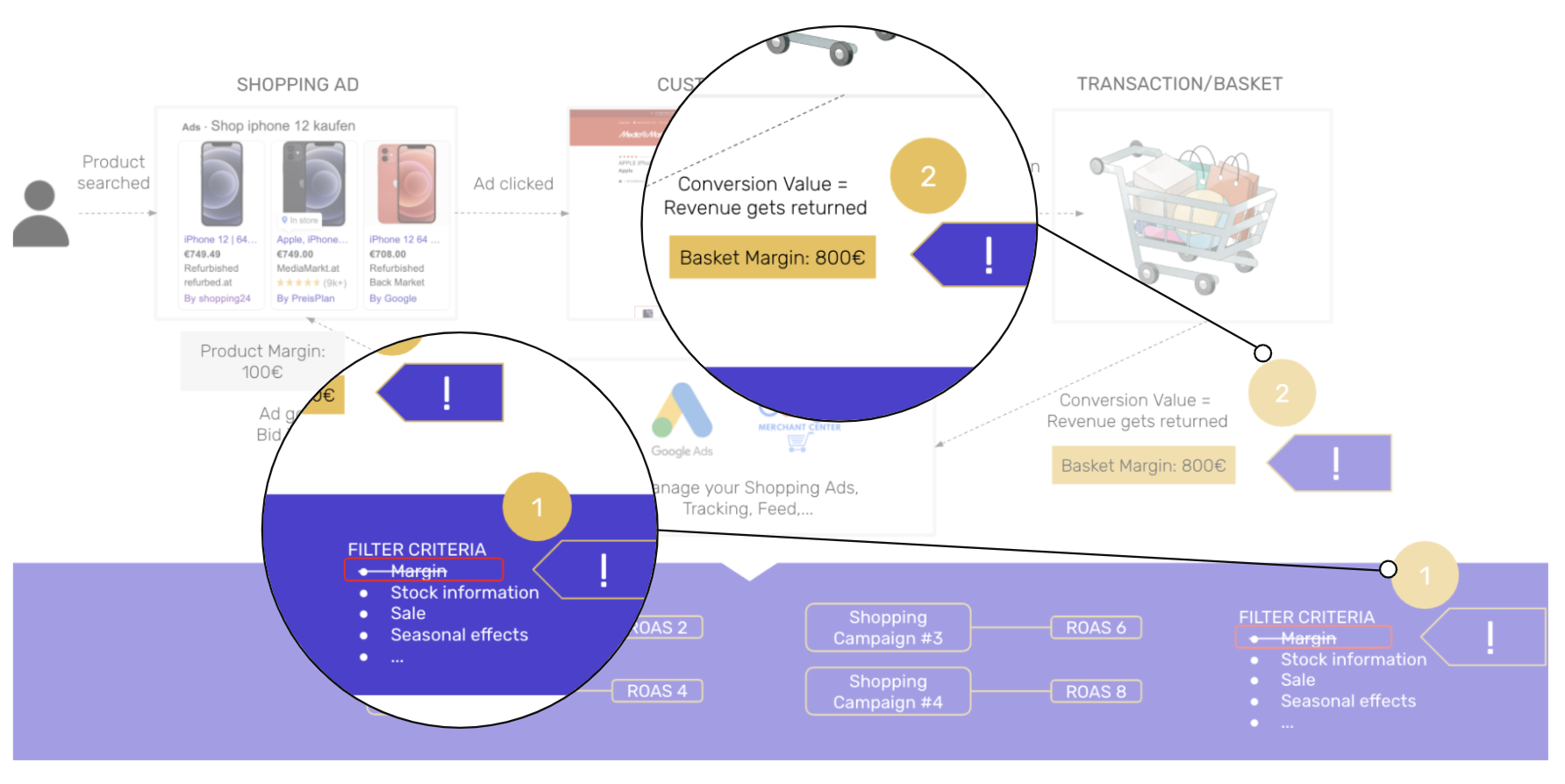Subscribe to join thousands of other ecommerce experts

Google Shopping remains one of the most important channels for ads. But ever increasing demand led to greater competitive pressure in ecommerce. Retailers need to improve their performance and relevance of their ads to stay competitive. Leaving ROAS and optimizing Google Shopping with profit data can be such an important factor to differentiate. Read on to find out how.
Table of Contents
Look for alternatives to a revenue-driven Google Shopping goal setting
Many focus on ROAS as their main goal setting – they often treat it as “Revenue on ad spend” instead of what it really is: “Return on ad spend”. I understand that revenue comes in super handy – not only because it is available out of the box at the time of transaction but also because many companies aim to grow their revenue share rather than profit. Sustainable growth and long-term success, however, demand a shift towards profitability rather than quick wins. Especially when the environment is getting tougher and more intransparent by the minute. Optimizing your Google Shopping campaigns for profit can help you stand out in these tough conditions. But how does it help exactly?
How can profit-driven optimization help my Shopping campaigns?
Profit-driven optimization allows advertisers to compete on a different level and bring some relief – especially if their industry is already characterized by low margins and high competitive pressure. We see this shift in mindset in many of our ambitious clients, exemplified by the increasing demand for integrating custom labels based on profit per product in the bidding setup within our Shopping Ad Automation technology. But using the profit of the product to optimize bids in Google Shopping can be tricky…
Move from a revenue-driven to a profit-driven Google Shopping optimization
That’s where the ominous “clicked vs. bought dilemma” kicks in. This dilemma, as I like to call it, refers to making product advertising decisions based on the assumption that the item which received an ad click is also the item that ends up being bought. This phenomenon is not really surprising: I am sure that most of you have clicked on an ad before and then browsed through the shop before also buying additional items – or a different product altogether. What is surprising though, is how often this simple fact is disregarded and results in faulty decision-making. So, let me elaborate on this a little further.
Let’s think of how a simplified customer journey looks and which actions online marketers typically take when it comes to optimizing campaign management in Google Shopping:

- A user searches for a product and clicks your ad.
- The user browses through your offering on the webshop.
- The user adds products to the shopping basket and completes the transaction.
- A conversion value (usually revenue) is recorded and put to use for Google ad optimization.
- Multiple campaigns allow for different goal settings per assortment segment. You can set different campaign splits for profit per product (most popular), stock, sales etc.
- ROAS tied to profit of the product results in over- or understeering of bids (clicked vs. bought dilemma)
So how to overcome this situation, still bring in margin data and improve the management of Shopping ads?
How to calculate gross profit per Google Shopping basket transaction

The best way to overcome this situation is by deducing what users actually buy after they click on an ad and which ad click leads to which order composition. In theory, this might sound rather easy. All you need to do is connect different data types and make use of Google’s offline conversion import.
You will need access to the following data:
- Click-ID report: Allows you to connect an ad click with the actual transaction. Here are some useful links about what the click ID is and how to get to such a report.
- Analytics data: Sheds some light on the transaction: Bought items, their quantity and price.
- Google Shopping performance data: Links the costs of an ad click to it’s generated basket.
- Product data: Features cost of goods sold (COGS) as well as other attributes. These can be used to aggregate the data on different levels.
All of these data sets have different identifiers in common, such as item_ids, click_ids or transaction_ids, allowing us to combine these data sets. In a nutshell, this roughly looks like this:

With excel, a data warehouse or big data tool, such as big query, you can combine the data sets and calculate a gross profit per transaction (also called order margin, order profit, profit per basket or basket margin). You can calculate gross profit by deducting COGS (of the sold items) from the revenue generated through the ad. Then, you use the offline conversion import to upload and link this value to your ad click as a conversion value. Here you can check how to use the offline conversion import.
Now, you can report profit per transaction alongside revenue tracking, structure campaigns based on business metrics other than revenue, and choose which value to use for bid optimization. Image below: “Profit per transaction” replaces “profit per product”.

Challenges of optimizing Google Shopping ad campaigns with profit data
In real life the challenges to set up and maintain such an approach are way bigger then this simplified description from above suggests. Online Marketers are facing these key challenges:
- COGS data might not be available and you need to convince different stakeholders to access it
- Ensuring the use of correct and up-to-date data
- By adding transaction costs, refunds and returns to the equation, you increase complexity
- Managing different timestamps for ad clicks, transactions, returns and refunds
- Making sure that roundtrip runs daily, processing all data and calculating the profit per transaction
- Convincing your management to move from a revenue-focused to a profit-focused approach and more
Optimizing Google Shopping campaigns based on profit pays off. But that’s not the only benefit of this approach. It allows you to better understand the customer journey. In addition to that you can extract insights, such as which items are often replaced by others, which items are typically bought together etc. – and use this valuable information as input across business areas.
Conclusion
Experts have discussed many ways of optimizing conversion value tracking beyond revenue. However, it failed to grab the attention of the mainstream audience. Many advertisers have not yet adapted this model to tweak their campaigns. First they need to shift the mindset of the whole company from revenue towards profit. Measuring growth is still based on revenue growth within most teams. Prevailing in today’s environment and enhancing online ads further, despite limited control mechanisms, calls for stepping up. The solution is to overcome revenue limitations. We are more than happy to help you in this endeavor.
Master the shift, accurately report and utilize profit per transaction information. This way you will be able to derive multiple valuable insights to enhance your ads. All while moving further up the ladder towards the ultimate goal: mastering Customer Lifetime Value.
Find out more about Customer Lifetime Value in our “Growing Ecommerce” podcast below with Mike Ryan and data scientist Katherine Munro:

